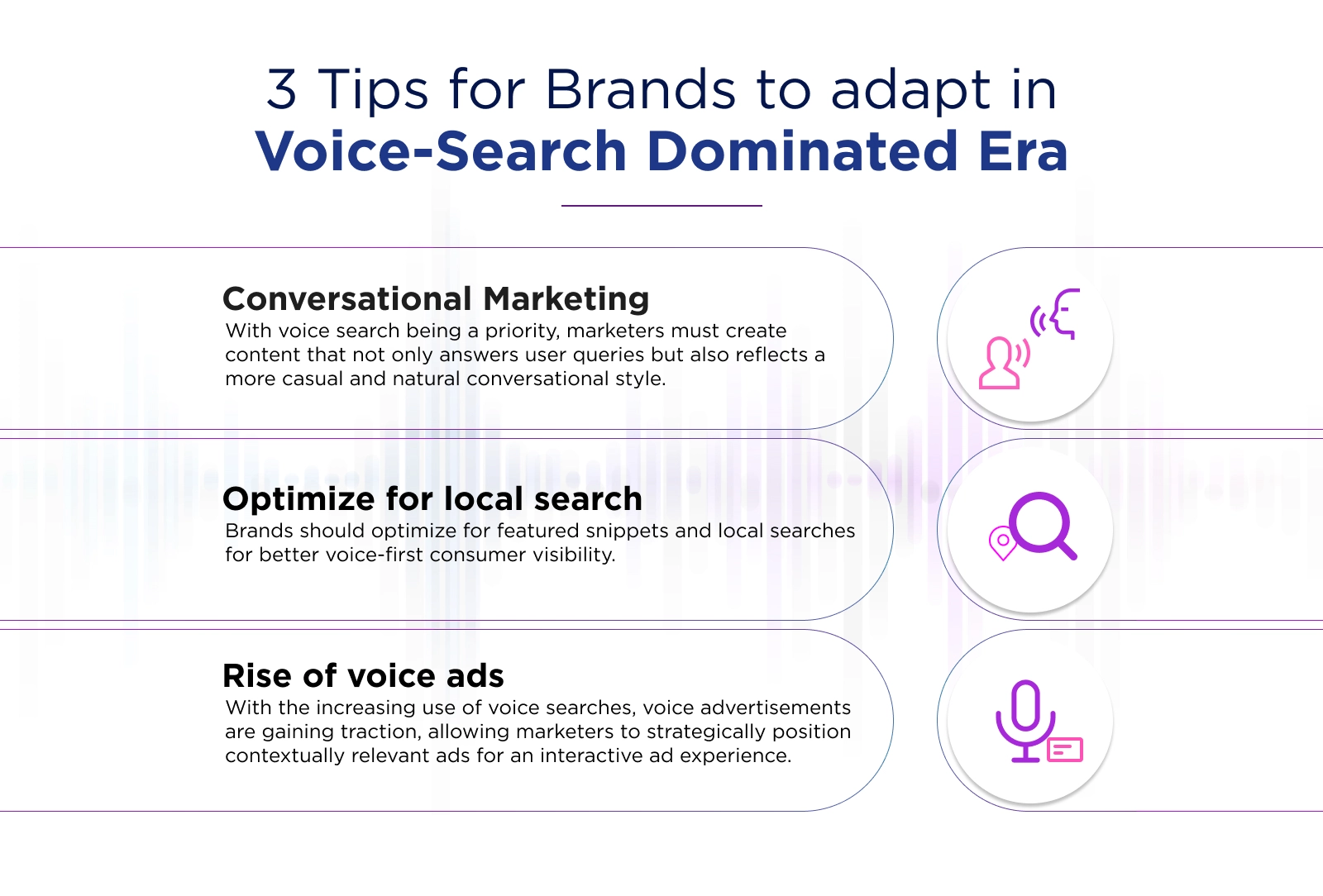By Rohit Dadwal | MMA Board Member and Managing Director APAC | MMA Global APAC
The last decade has seen a remarkable transformation in the realm of voice search. Once fraught with technological challenges—uncertainty in results, lack of voice recognition, and lack of personalization—it is now an everyday convenience for consumers. With advancements in AI and ML (machine learning), consumers can search, shop, listen, and transact hands-free. These technologies have accelerated the adoption of voice search and allowed brands to connect more deeply with their consumers.
However, a bigger question is: how is advancement in voice search shaping consumer preferences, and what should brands do to adapt? This article delve into these two critical aspects, shedding light on staying relevant in the evolving voice search landscape.
How is AL dominating voice search?
The complexity and volume of search engine queries have grown exponentially. With a staggering 63,000 searches per second, approximately two trillion searches annually, it is unattainable for any individual or even conventional machines to process the information accurately and timely. Moreover, search engines must produce results that match consumers’ queries to meet the rising demands of personalization. With neural networks and deep learning algorithms (subsets of ML), these machines can comprehend consumer queries and match them with the closest link possible.
Neural networks are inspired by the human brain and are designed to recognize patterns and interpret sensory data through labeling, listening, or machine perception of raw inputs. And deep learning uses neural networks with many layers that enable it to learn and process complex patterns and relationships in data. This results in more personalized and advanced results for consumers.
How is AL ML shaping voice search and consumer preferences?
 The convenience of shopping and searching hands-free is the single biggest reason fueling the growth of voice searches. Instead of typing, users can give an audio command and, in most cases, like smart home devices, hold a conversation to complete their query. This offers unparalleled personalization and a unique experience to each consumer.
The convenience of shopping and searching hands-free is the single biggest reason fueling the growth of voice searches. Instead of typing, users can give an audio command and, in most cases, like smart home devices, hold a conversation to complete their query. This offers unparalleled personalization and a unique experience to each consumer.
Beyond basic functions like setting a reminder, playing music, or taking notes, voice search facilitates a greater consumer demand, including completing a purchase. Research predicts that by 2024, personal voice assistants will outnumber the world’s population.
Here’s how advanced voice search is shaping consumer preference and how brands can adapt:
1. Conversational marketing
Voice search has brought about a fundamental shift in the way people conduct online searches. Instead of the traditional short, keyword-based queries, users are now engaging in more conversational, long-tail keyword searches. This change is due to the natural, conversational tone users adopt when using voice search – they tend to query in the same manner they speak. This evolution in user behavior necessitates a shift in how marketers optimize their content for search engines.
To effectively respond to this trend, marketers must create content that directly addresses user questions. Here’s how they can do this:
Implement Structured Data: Structured data aids search engines in locating and understanding the content. This can be achieved using schema markup, which helps search engines better comprehend the content context.
Create FAQ Pages: These pages are invaluable for answering common user questions. By addressing these queries, businesses can improve their visibility in search results.
Utilize Long-Tail Keywords: As voice searches often resemble natural, conversational language, long-tail keywords (typically more specific and longer than regular keywords) are gaining prominence. These keywords can effectively cater to question-based or conversational search queries.
2. Optimize for local search
Transformation in search engines is multi-faceted. Consider the role of featured snippets, for instance. When a user voice-searches, the snippet is read out to them, making it convenient for them to gain information. Therefore, targeting position zero or snippet is a good brand strategy to gain more visibility among voice-first consumers.
Another aspect of this transformation is the growth of local searches. Users increasingly turn to voice search for local inquiries such as “Where’s the nearest salon?” or “Direct me to the nearest restaurant.”
Such trends underscore the necessity for businesses to optimize for local searches. One effective strategy to achieve this is using location-specific keywords, which can significantly boost a business’s visibility in local voice search results.
Lastly, it’s important to note that voice searches are predominantly performed on mobile devices. This makes mobile optimization a critical aspect of SEO for voice searches. Key considerations include ensuring the website loads quickly, is easy to read, and navigates smoothly on mobile devices. By focusing on these factors, businesses can better position themselves to leverage the growing voice search trend.
3. Rise of voice ads
As voice searches continue to surge in popularity, voice advertisements are gaining momentum, resulting in an interactive ad experience for consumers.
These voice-based ads empower marketers to connect with their audience in a more immersive way by strategically placing contextually relevant ads that resonate with users. This targeted approach enhances engagement levels and mitigates ad aversion by transforming the ad experience from intrusive to interactive.
For instance, Instreamatic used voice ads where consumers can have a dialogue with the advertisement played on their podcast, music, and online radio apps for Mazda, an automobile company. The campaign enabled the brand to get 3.29% of consumers (who showed no interest in the brand) to develop a change of heart.
Conclusion
Voice searches present a unique opportunity for users to experience a more bespoke interaction, obtain search results without manual input, and unlock higher levels of customer engagement and satisfaction.
Companies failing to adapt and optimize for voice search risk falling behind in this rapidly advancing competitive space. Their absence in voice search results could be perceived as a lack of innovation and adaptability, potentially impacting their market position.




















